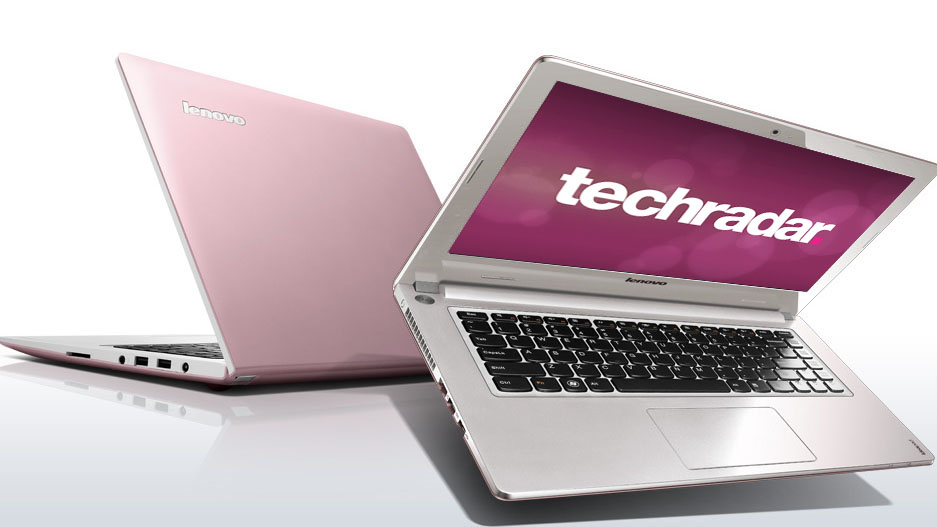TechRadar Verdict
Pros
- +
Ivy Bridge performance
- +
Low price tag
- +
Connectivity
- +
Great design
- +
Good keyboard
Cons
- -
Poor battery life
- -
Quick start needs improving
- -
Wasted gaming potential
- -
Heavy
- -
No SSD
Why you can trust TechRadar
Lenovo has been coming out with some really good Ultrabooks of late, with its IdeaPad U410 offering excellent performance and features for less than you would expect. The company's latest offering is the Lenovo IdeaPad S300 - a smaller and more portable 13.3-inch proposition than the U410, but with an equal amount of power.
It sports a third-generation Ivy Bridge Core i5-3317U processor, a not-too-inconsiderable 4GB of memory and an AMD Radeon 7450M graphics card. It's more in line with the U310, but with a few differences - and it costs a lot less, at £469.99 (around AU$729/US$757).
Compared with similarly-sized rivals, such as the super-slim Asus Zenbook U32A, the Dell XPS 13 or the ridiculously light Toshiba Satellite Z930, the Lenovo IdeaPad S300 is a little bit bigger. It weighs a rather hefty 1.8kg (4lbs), and 22mm (0.86 inches) at its thickest means it's some way off the skinny 14mm (0.55 inches) of the latest 13.3-inch Zenbook.
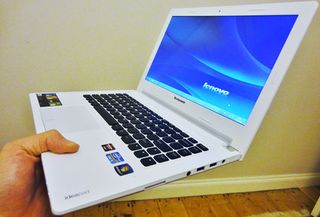
The thing is, technically the Lenovo IdeaPad S300 isn't actually an Ultrabook. It's actually a super-specced version of the existing Pentium S300 also available for a similar price.
On paper it has everything you might expect from an Ultrabook: performance, slimness and looks, but the lack of a fast-booting SSD drive - a 500GB HDD is all you get - prevents it from being able to sit in this category.
But don't let that little shortcoming get you down, because the Lenovo is capable of so much more, and it can do it for much less money than many of the other Ultrabooks out there.
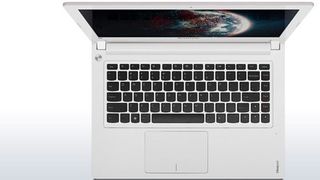
It certainly looks like an Ultrabook. The MacBook-esque white keyboard surround/screen bezel and top side finished in metallic paint (in either silver or violet colours) gives the Lenovo IdeaPad S300 an understated but classy look, while the layout is very clean and minimalistic.
It's got excellent build quality as well. There are no gaps in the material spoiling the show, and it has a certain solidity to it that suggests it costs much more than it actually does.
Specifications
While this laptop doesn't feature the fast-booting capability of an SSD drive, Lenovo has included a Quick Start feature that enables you to boot into an alternative operating system in seconds, offering access to many basic functions such as internet browsing or media playing.
The idea is sound, but the delivery could have been better. For starters there's no dedicated hardware button - instead you must use a shortcut key to access it, and - in all honesty - in use it feels a little clunky.
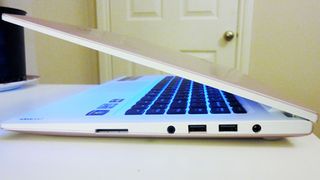
You'd probably be better off just waiting an extra 30 seconds for the much more intuitive experience offered by Windows 7.
Despite the relatively low cost of the Lenovo IdeaPad S300, it features a pretty impressive array of connections, including three USB ports, although only one gets the privilege of the faster USB 3.0 standard.
There's a handy HDMI port for outputting the Lenovo IdeaPad S300 to a big screen TV, but gone is the legacy-style VGA port of old. Does anyone really use it any more?
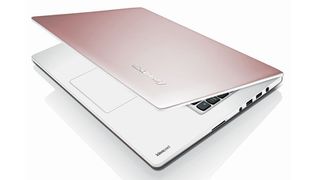
Other useful features include 802.11 b/g/n Wi-Fi, as well as Bluetooth, which ticks all the wireless connectivity boxes.
A 720p HD camera also features in the Lenovo IdeaPad S300, so not only can you keep in touch with your friends with ease thanks to faster internet access, you can also beam your video conversations in high quality right to them.
Although the Lenovo IdeaPad S300 features a more consumer-friendly glossy screen, as opposed to a more business-like matt screen, it handles reflections outdoors quite well, unless of course it's in direct sunlight - there aren't many laptops that can deal with direct light, mind.
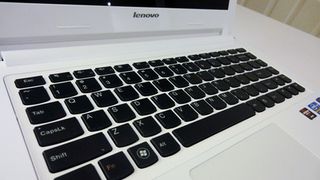
The actual quality of the screen is quite good, although dark scenes in movies revealed the screen's shortcomings - it's much too dark in areas, even with the screen tilted at an extreme right angle, suggesting a poor contrast ratio. Under normal circumstances you won't really notice it, unless you spend a lot of time watching films.
The 1366 x 768 resolution screen is, of course, lacking in overall clarity, but you'll have to pay a lot more to get Full HD.
In everyday use, the Lenovo IdeaPad S300 stacks up pretty well. The Chiclet keyboard is very easy to type on and has a decent level of feedback, although the travel of the keys is a little low, meaning that typing can feel a little harsh at times.

Overall, our satisfaction with the touchpad was also reasonably high, its large surface area providing easy control of the Windows 7 interface. And the built-in mouse, while tricky to begin with, was easy to handle thereafter.
The Lenovo IdeaPad S300 comes with a variety of extra software - some good, some bad and some average. The one-click rescue system (which has a dedicated hardware button on the chassis) is essentially just the Windows Backup and System Restore tools under one roof, but some people might find this handy if it's something they do often.
More useful - we thought - is the Boot Optimiser, which tells you how fast boot speed is. It then gives you the ability to optimise the startup if it's not performing as expected.
